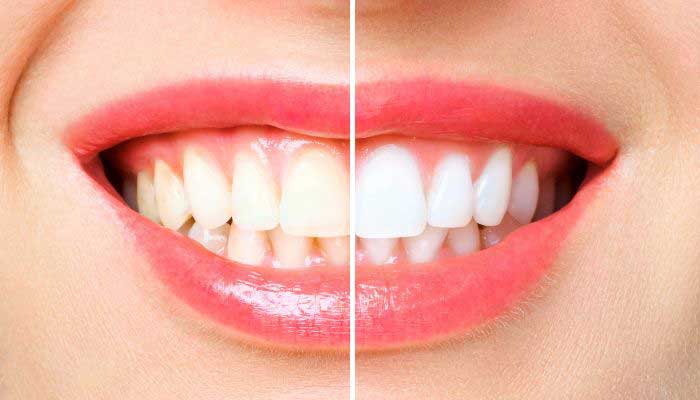Table of Contents
Dentists recommend that you rinse your mouth with water after having wine, coffee or other drinks or foods that can stain your teeth.
East Side Dental Tweet
Tooth Discolouration - What Is It?
Your teeth can become discoloured by stains on the surface or by changes inside the tooth. There are three main types of tooth discolouration:
- Extrinsic— This occurs when the outer layer of the tooth (the enamel) is stained. Coffee, wine, cola or other drinks or foods can stain teeth. Smoking also causes extrinsic stains.
- Intrinsic— This is when the inner structure of the tooth (the dentin) darkens or gets a yellow tint. You can get this type of discoloration if:
- You had too much exposure to fluoride during early childhood.
- Your mother used tetracycline antibiotics during the second half of pregnancy.
- You used tetracycline antibiotics when you were 8 years old or younger.
- You had trauma that affected a tooth when you were a young child. A fall, for example, may damage the developing permanent tooth.
- You had trauma in a permanent tooth, and internal bleeding discoloured the tooth.
- You were born with a rare condition called dentinogenesis imperfecta.
- This causes gray, amber or purple discolorations.
- Age-related— This is a combination of extrinsic and intrinsic factors. Dentin naturally yellows over time. The enamel that covers the teeth gets thinner with age, which allows the dentin to show through. Foods and smoking also can stain teeth as people get older. Finally, chips or other injuries can discolour a tooth, especially when the pulp has been damaged.
Symptoms
Symptoms include stains on the enamel. They can range from white streaks to yellow tints or brown spots and pits. If the enamel has worn away, and dentin is showing through, you may notice a yellow tint.
Diagnosis
No special tests are needed. A dentist or other dental professional can diagnose tooth discoloration by looking at the teeth.
Expected Duration
Some tooth discoloration can be removed with professional cleaning. An example would be the stains caused by coffee. Many stains are permanent, however. Teeth sometimes can be whitened with a bleaching gel. In some cases, if the discoloration is severe, a crown or veneer may be required to cover it.
Prevention
Brushing your teeth after every meal will help to prevent some stains. Regular cleanings by a dentist/ dental hygienist also will help to remove surface stains.
Intrinsic stains that are caused by damage to a nerve or blood vessel in a tooth sometimes can be prevented. You may need to have root canal treatment to remove the inner part of the tooth (the pulp) before it has a chance to decay and darken. However, teeth that have root canal treatment may darken anyway.
To prevent intrinsic stains in children, avoid excessive early exposure to fluorides. Once the enamel is formed, fluoride will not discolour teeth.
Treatment
Many extrinsic stains caused by food and drink can be removed by regular professional cleanings and home care. Good home care includes brushing, flossing and rinsing after meals.
Discoloration often can be removed by applying a bleaching agent to the tooth enamel. One technique is called “power bleaching.” With this method, the dentist applies a bleaching gel. It causes the teeth to get significantly whiter in about 30 to 45 minutes. Several follow-up treatments may be needed, or take-home bleaching trays may be provided.
